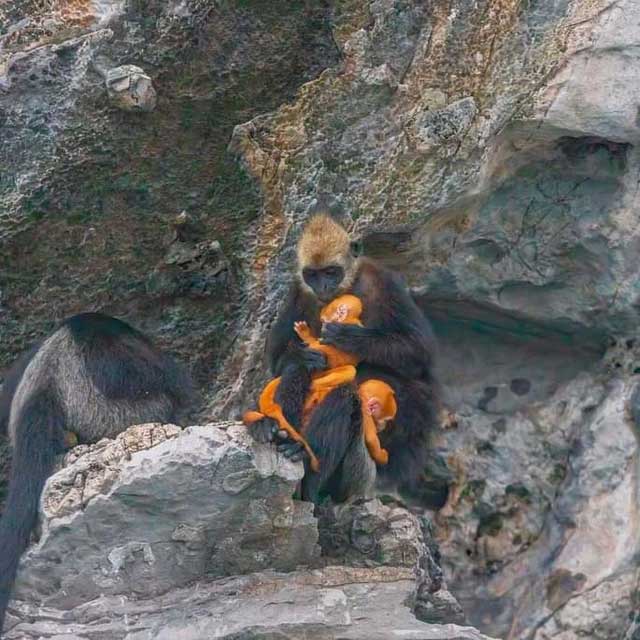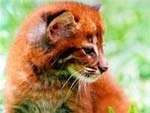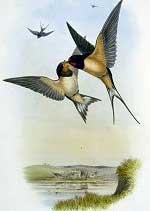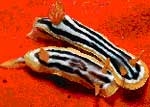Images of the rare white-headed langur family appearing on Cat Ba Island (Haiphong) have garnered significant attention on social media.
On May 6, social media showcased images of two adult langurs believed to be a “couple” on Cat Ba Island (Haiphong) embracing their young. In addition to the aforementioned images, reports on social media also indicated that the rare white-headed langur family has welcomed 3 to 4 new members with yellow fur.
The leadership of Cat Ba National Park (Haiphong) confirmed that the information and images of the langur family are indeed from Cat Ba Island. The newly born langurs appeared in April.
It is known that the white-headed langur is an endemic primate species that only exists on Cat Ba Island and is distributed throughout the areas of Lan Ha Bay, and is currently under strict conservation. Due to the extremely low number of individuals remaining, the natural growth of these langurs is a positive sign for tourism in Cat Ba.


Images of the white-headed langur family making their appearance on Cat Ba Island.
Identifying features of the Cat Ba langur include that, in adulthood, the males have a light-colored fur on their heads and shoulders that sometimes appears yellowish, while females have darker fur which stands out distinctly against their solid black coat. Their tails are very long, longer than many species of monkeys, to avoid confusion as many visitors cannot distinguish between different species.
The Cat Ba langur lives in areas that are 100 to 150 meters above sea level, in forests with vines and woody plants or steep cliffs. A typical group consists of 10 to 20 individuals, led by a dominant male.
In Vietnam, the white-headed langur is found only on Cat Ba Island and Cai Chien Island (Quang Ninh), but unfortunately, there are currently no individuals left on Cai Chien Island.
The white-headed langur, also known as the Cat Ba langur (scientific name: Trachypithecus poliocephalus), is a primate species that exists solely on the archipelago, with its core habitat being Cat Ba National Park. It is listed on the International Union for Conservation of Nature (IUCN) Red List, marking it as one of the highest-risk species for extinction in the world.





















































